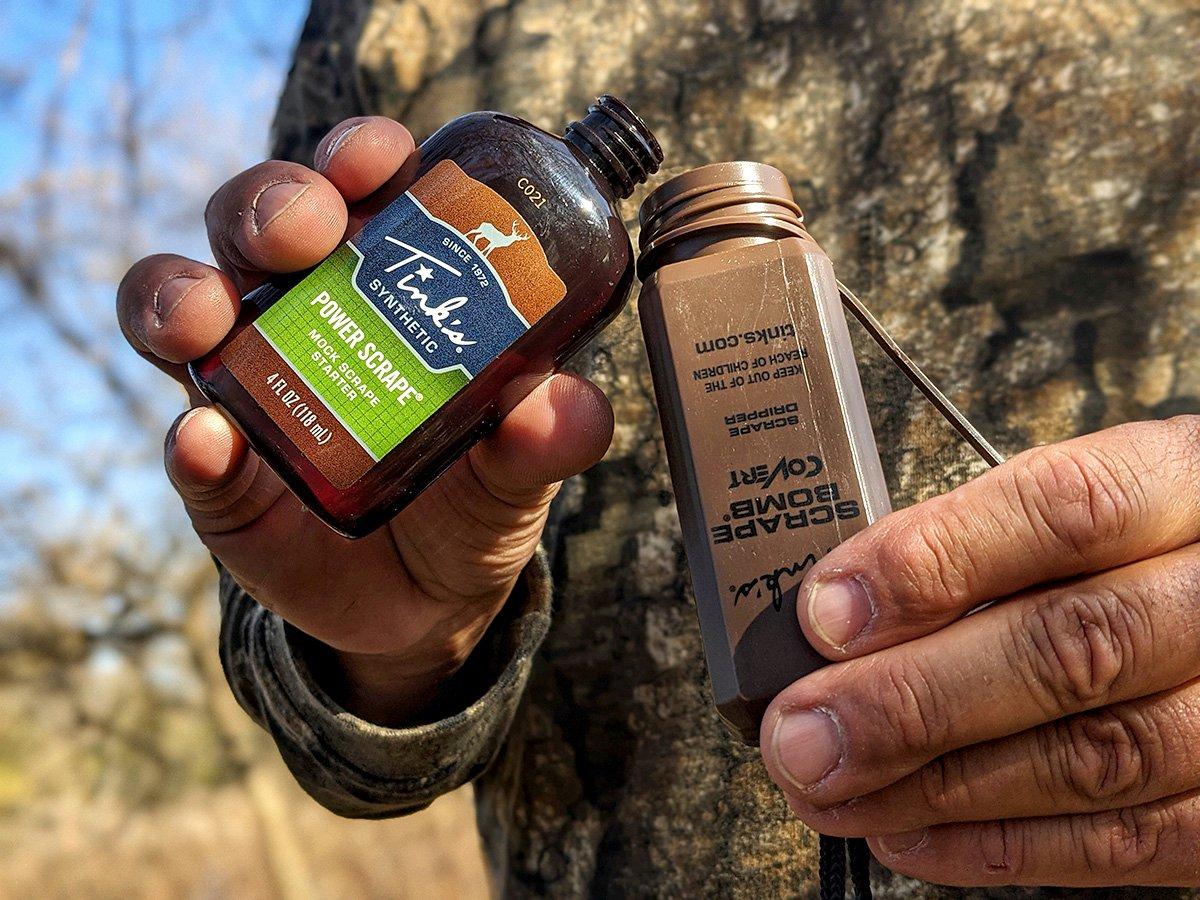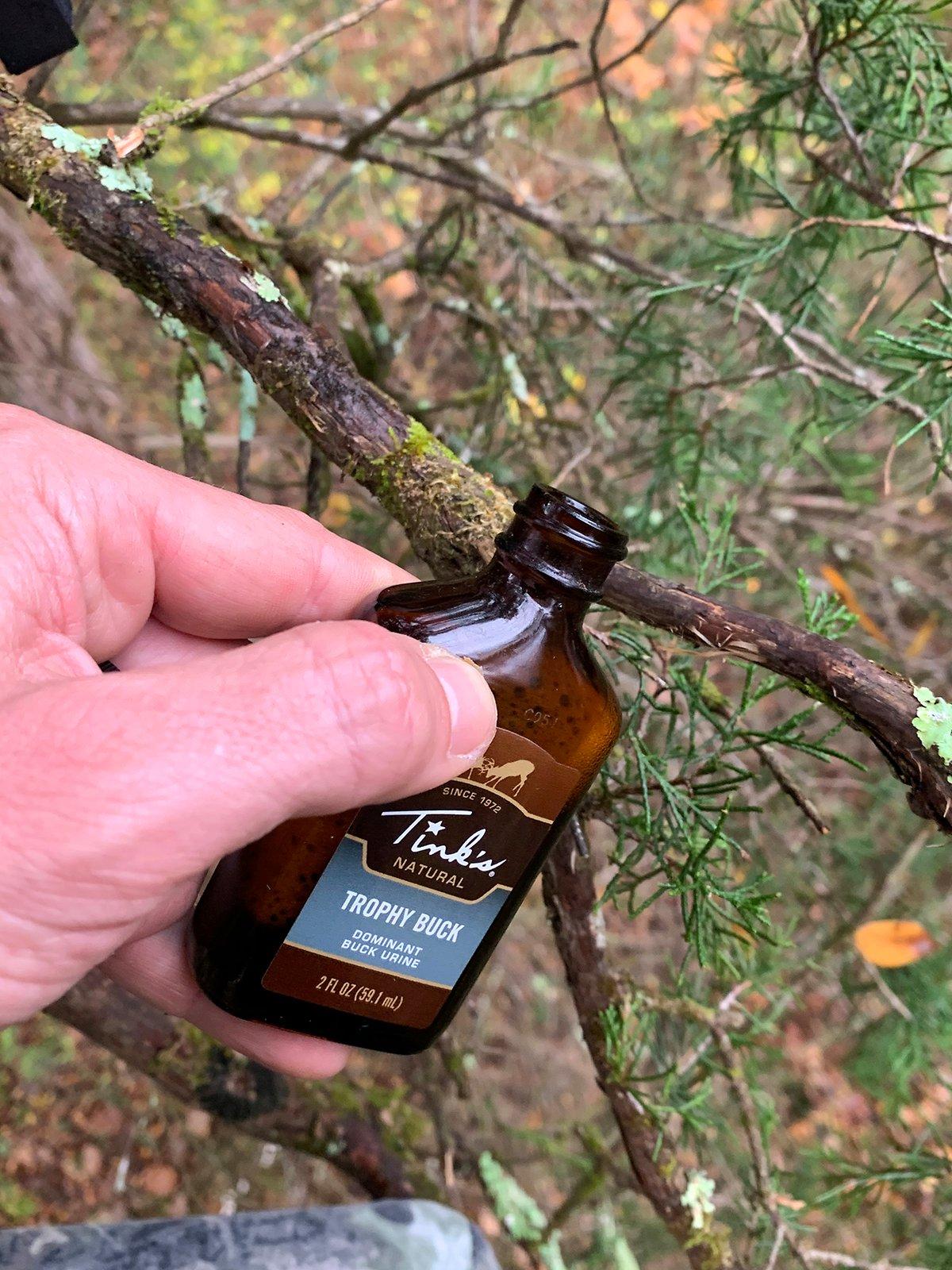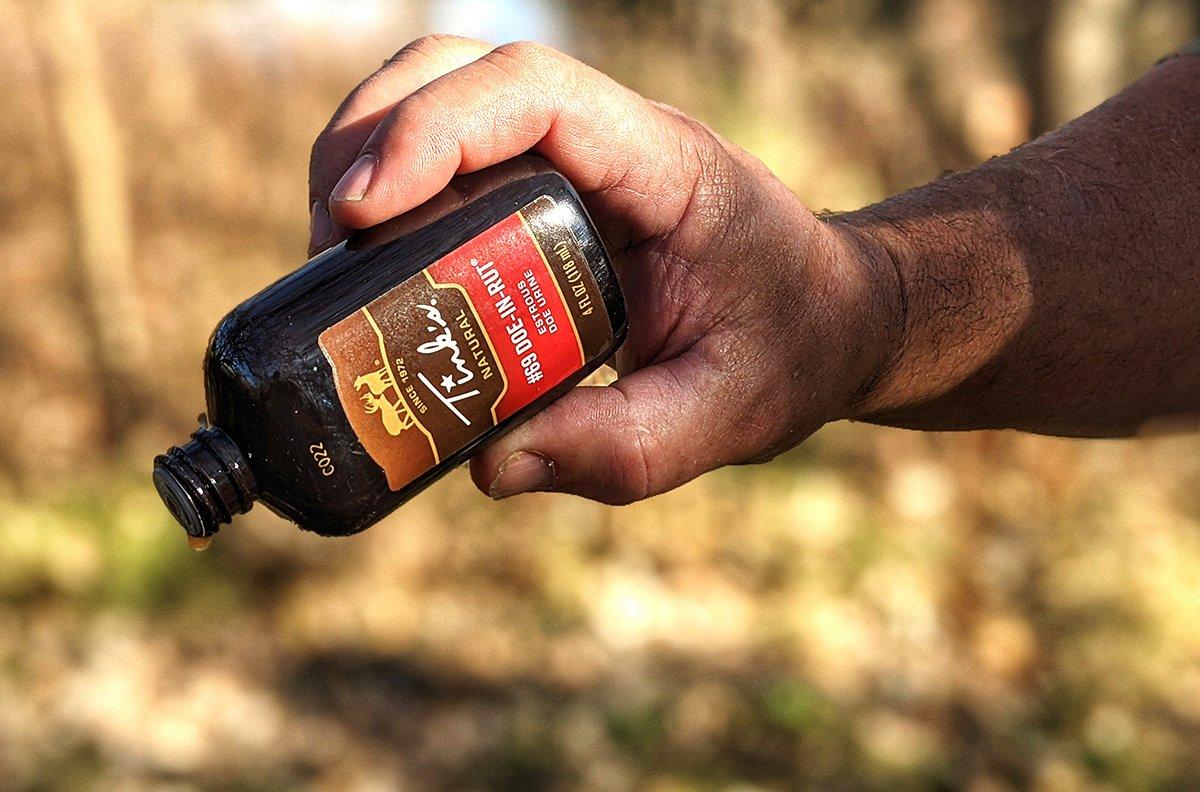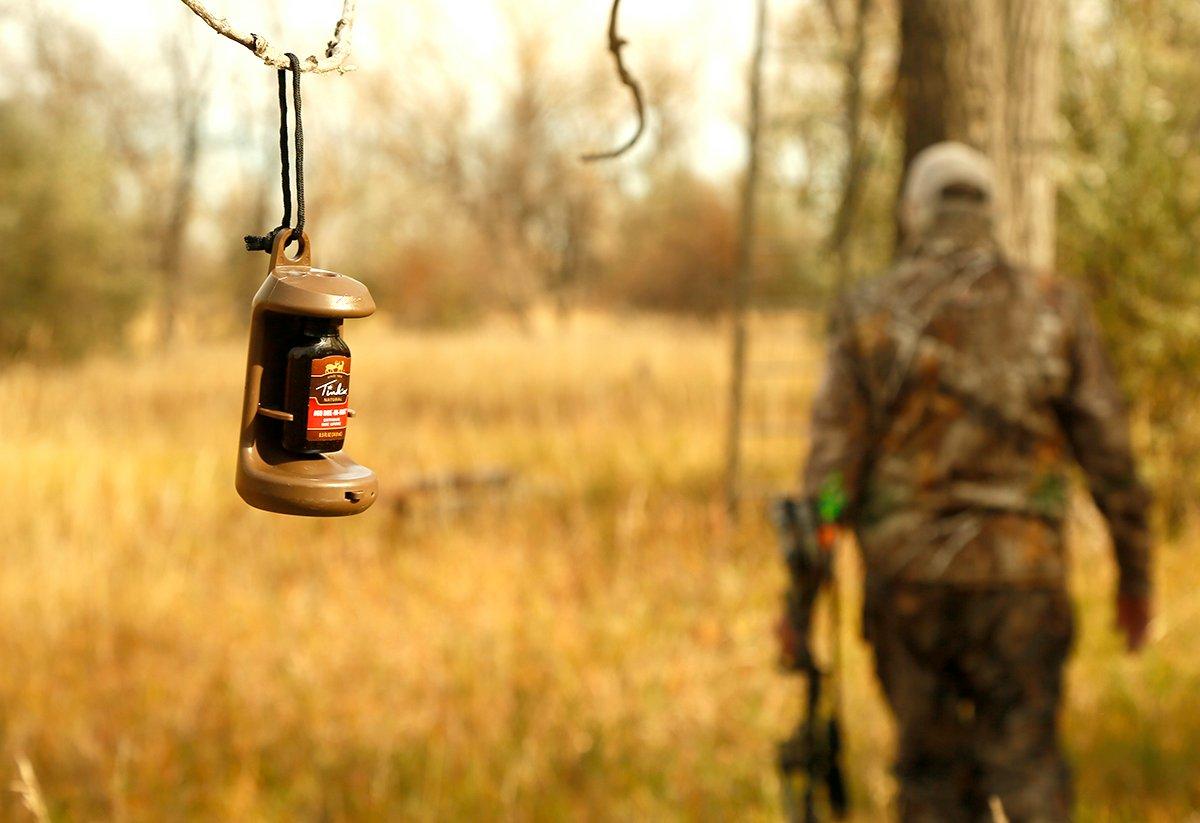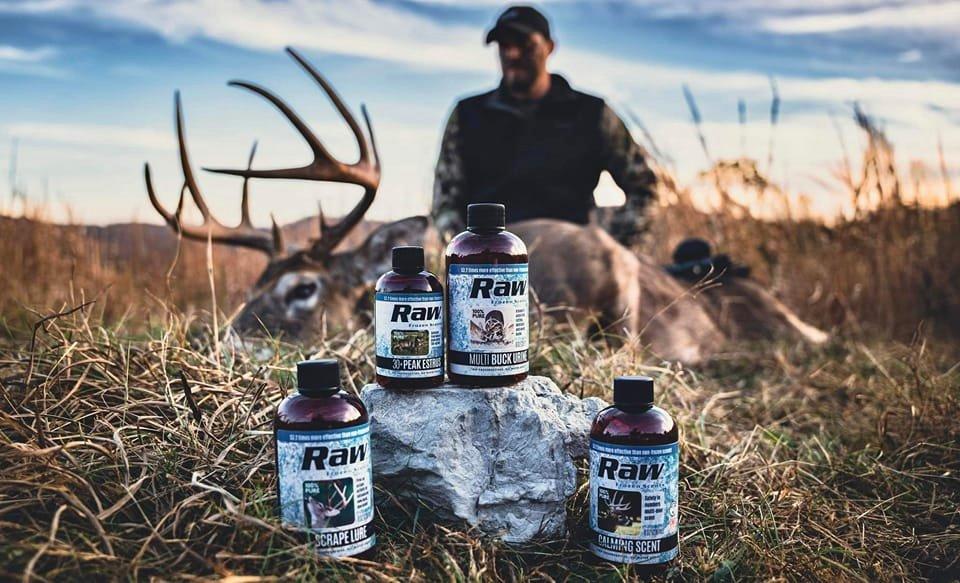There's a lot happening in the multi-million-dollar deer scent industry. Here's a look behind the scenes
There's demand for deer pee. Various sources place the deer pee industry's annual economic output at $20-45 million. That's a lot of dollars and scents. But like many industries, the deer scent one is kind of like 16th Century England, with the entire landscape being controlled by a few lords, some of which have bigger market share than others. While they're all in the same business, they're also each selling something slightly different.
So, where did the deer pee empire come from? And how did we arrive where we are today, with dozens of options for scent on store shelves — and big regulatory differences for using them from one state to the next? That's what we're digging into now.
The Empire's Origins
Using scents to attract game has probably been done since the beginning of mankind. The scent industry probably began with cavemen, said Bill Moore, founder of Hot Trails Inc., which sells deer-lure-scented candles that emit deer scent for up to four hours. They probably realized they could attract them with natural things.
Moore founded Hot Trails in 1989 after departing from his brother's scented wax business. But he was far from the first to try and make money selling deer pee. Tink's is one of the original scent companies, getting its start in 1972, when Tink Nathan started bottling and selling deer urine out of his garage. He recognized the potential to attract deer with scents, and he used that knowledge to produce a helpful product. Today, Tink's No. 69 Doe-in-Rut Buck Lure is one of the most recognized deer hunting products available. Tink's is still in business with a variety of products, and it recently celebrated its 50th anniversary.
Other scent companies such as Wildlife Research Center and Code Blue have also been around for decades, and their products continue to be popular. Demand for hunting scents has continued to grow over the years, said Sam Burgeson, president of Wildlife Research Center. The last couple years, we have seen a surge in people that are new to the sport or getting back into hunting.
(Don't Miss: Why and How to Scout Summer Scrapes)
Scents and CWD
The entire deer scent industry is made possible by deer farming, with the urine being collected at massive captive whitetail facilities. Meanwhile, there's been an undeniable correlation between captive deer farming operations and outbreaks of Chronic Wasting Disease, which many wildlife biologists consider to be the single biggest threat to the future of wild whitetails and deer hunting. Some suggest that the prions that cause CWD could even be spread by deer urine, and a few states have responded in turn with outright bans on the products. Other states don't allow scents to be used in CWD areas.
Programs monitor all of this and provide third-party assurance that urine is from closed-herds, and that animals that die in the facility are CWD-free, said Dan Forster, ATA vice president and chief conservation officer. States have the responsibility and authority to keep their herds safe. Within the spectrum of acceptability [of deer scents], there's a wide birth there. Some states have more acceptance than others. Those with zero acceptance have more rules and regulations. Other states have strong constituencies and traditions of using scents for hunting. Some do not. It's a balance state agencies must find, and it's easy to see why we have such a diversity of regulations.
Today, many of the larger scent companies are working together to confront the challenges of CWD, and being proactive in educating consumers and state wildlife agencies on how they safely collect their product. By establishing the Responsible Hunting Scent Association, and the Deer Protection Program, plus having all products tested through CWD Evolution - RT-QuIC (Real-time quaking-induced conversion), these self-imposed regulations assure that products being sold are free of CWD.
There is a whole lot more to deer scent than just putting pee in a bottle, said Burgeson, with Wildlife Research Center. As members of the Responsible Hunting Scent Association and participants in the Deer Protection Program, there are a lot of requirements and biosecurity measures that go far above state and federal requirements to protect the sources of our urine. The best available science shows that urine-based hunting scents from responsible scent companies like Wildlife Research Center do not pose a risk of spreading CWD.
Matt Wade, with Code Blue Scents, says the entire industry is working diligently to educate the public, and lawmakers, that modern deer scents aren't spreading CWD. Code Blue and our reputable competitors are interested in more than just selling scent, he said. This specific group of scent manufacturers and collection facilities adhere to stringent standards and test every bottle of deer urine to ensure it is safe for use and will not contribute to the spread of CWD.
(Don't Miss: Try This Deadly Scent Strategy for Late-Season Bucks)
While most scent companies, and especially those with larger market shares, participate in the DPP, it all started thanks to a multi-pronged effort. The Archery Trade Association (ATA) is a non-profit organization that centers on growth and increased participation in archery and bowhunting. It also led the charge in ensuring CWD-free deer scent.
The DPP started out of a request from some [scent] manufacturing members in ATA, Forster said. Their concerns evolved out of increasing geographic distribution of chronic wasting disease and resulting concerns that state fish and wildlife agencies had regarding use of wild cervid urine. There was no regulatory oversight regarding urine. ATA set off on a quest to engage agencies, CWD experts, and developed a list of concerns agencies had over urine.
That effort developed a program that ensured consumers were using deer scents that were safer. As a result, it created an oversight program and a stamp of approval (the ATA checkmark) that commonly appeared on urine-based products. However, a few years ago, they handed this task off to the Responsible Hunting Scent Association (RHSA). Now, certified urine products have the DPP checkmark logo, and the RT-QuIC Tested checkmark logo, to verify assuredness and compliance, which is required by certain states.
Today, the program has an even stricter list of requirements and policies, including closed herds used for scents, live deer testing, dead deer testing, and most recently, with the arrival of newer technology, testing of liquid urine vats. Of course, a much lengthier list of stringent rules and polices are in place to reduce the CWD exposure of these closed deer herds being used for scent products.
According to Forster, in addition to the DPP program, there also exists a USDA herd certification program. It certifies low-risk herds, but that program falls short in most states' eyes, because the movement of deer is still allowed. The DPP program does not allow the movement of deer, which is why many states require scent manufacturers' enrollment and participation in that program to do business in their jurisdictions.
You can go here to see which companies participate in the Responsible Hunting Scent Association's efforts. Not all scent manufacturers participate.
(Don't Miss: Why Buck Tarsal is the Deadliest Scent in the Deer Woods)
Modern Scents. Modern Applications.
I frequently use deer scents at certain times of the season, and have had a number of good responses. Buck urine is a good scent to use throughout the season, but especially the early season, pre-rut, and rut. Doe urine is an all-season application, too. Doe estrus, however, is best used during the latter days of the pre-rut, rut, and early days of the late season.
Buck and doe urine are generally best suited for scrapes and mock scrapes. I commonly use both to juice up scrapes, mock scrapes and real ones both, and routinely get trail camera photos of mature bucks because of it.
Furthermore, doe estrus is an excellent scent option for scent drags. I've even had good bucks follow scent drags right to my stand. In addition to this effort, or even independently, using different scents within their respective windows for shot opportunities works, too. Select the right scent based off the time of the season, and deploy these in shooting lanes where you want to stop deer for a shot.
As for how they work, modern scent products are a combination of aromas derived from glands, liquids, and pheromones, all of which deer use to communicate naturally in the wild. Understanding how those communications work can be advantageous for hunters.
(Don't Miss: The Deer Hunter's Guide to Whitetail Glands)
For example, a doe in estrus has increased body heat (up to 112 degrees in certain … areas). When she walks around the woods, the steam coming off her sticks to the bushes, said Rex Holmes, founder of Vapor Trail Scents. That information can be especially helpful when making mock scrapes. When a buck makes that scrape, that overhanging branch is dead center of it, Holmes continued. That doe's steam goes straight up and sticks to that limb. That's where he gets his messages.
Speaking of scrapes, longtime hunters might remember when Wildlife Research Center helped popularize scrape hunting with the introduction of their Scrape Drippers, which launched more than 30 years ago. Today, the Magnum Scrape-Dripper can be used on existing scrapes or used to create mock scrapes, Burgeson said. Hang it 5-6 feet off the ground, and it will drip daytime only for two to three weeks, depending on conditions.
Today's hunters can choose from the freshest, natural products available. RAW Scents, for example, freezes their deer urine after collection. It's the only way to keep it at its freshest state, said Elam Lapp Jr., owner and founder of the company. Deer urine is no different than meat or most food. It quickly starts breaking down after collection if not frozen.
Meanwhile, other companies like Paul Black's Odin's Innovations sell synthetic scents, which can last for up to 30 days (and might be legal in places where real deer urine is illegal). The point? Hunters have plenty of options and can experiment with different types of scent to see what works best.
(Don't Miss: 5 Things You Don't Know About Deer Senses)
Where the Deer Pee Empire is Headed
With the arrival of stringent regulations, it seems the wave of state's banning real deer scents has possibly curbed, or at least slowed down. However, only time will tell where that goes.
One thing is certain, though. In a hunting industry driven by market share, and ever-changing rules and regulations affecting use of deer scents in CWD areas, companies are continually adapting. Code Blue's Matt Wade sees a bright future ahead, but also the need for scent companies to adapt with the times. With a few states eliminating the use of real deer urine, we at Code Blue spent a considerable amount of time perfecting our synthetic line of products, he said. We have carefully crafted our synthetic line of scents to mimic these naturally occurring scents.
Other innovations include how scents are delivered in the field. Code Blue, like many companies, sells pure deer urines in liquid, gel, aerosol, and semi-solid forms to be useful during all parts of the season, and in all environments. Still, according to Wade, their best-seller continues to be its natural, 1-oz bottles of doe estrus.
In addition to the things longstanding major players — such as Black Widow Deer Lures, Code Blue, Conquest Scents, Tink's, Wildlife Research Center, and more — are doing, other companies are also up-and-coming or game-changing forces in the scent industry. Some of these include Buck Baits, Mrs. Doe Pee, RAW Scents, Wyndscent, etc. In addition to others doing the same, these companies are doing things differently, and taking new and unique approaches in the deer scent game. All the aforementioned companies, and others not mentioned, are DPP participants.
Hunters have been using scents to their advantage for a long time, and that's unlikely to change. Those few companies in charge of the empire aren't likely to go anywhere anytime soon, either.
(Don't Miss: 7 Fascinating Facts About Whitetail Noses)


